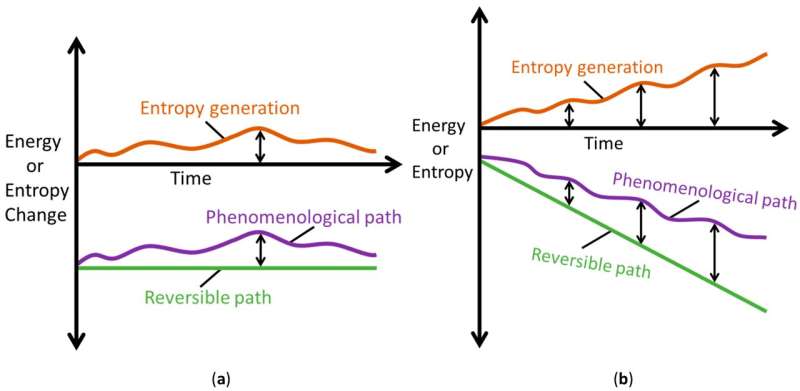
The performance and reliability of machines and devices reduce as they age. Currently, inaccurate degradation characterization leads to over- and under-maintenance, both of which have dire consequences on society. Hence, the urgent need for improved methods to optimize system maintenance, prevent failure and reduce costs.
After almost a decade investigating the physics of degradation of diverse systems such as frictional interfaces, lubricants, batteries, metallic structures, and others, an international duo of Dr. Jude Osara, Assistant Professor in the Faculty of Engineering Technology and Prof. Michael Bryant (retired) of the University of Texas at Austin, in a 2-part treatise, proposed a universal thermodynamics-based damage characterization methodology to analyze real systems undergoing often complex processes.
The articles "Methods to Calculate Entropy Generation" and "Systems and Methods for Transformation and Degradation Analysis" were recently published and featured in the journal Entropy.
Everything degrades over time. When engineering systems are not actively maintained, they eventually fail, and some failures can be catastrophic, such as in the transportation and construction industries. To mitigate these failures, preventive maintenance—costing billions of euros annually—is required. Accurate degradation characterization is needed to reduce maintenance costs and prevent failures.
Starting from first principles, Jude Osara and Michael Bryant recently developed an approach based on the second law of thermodynamics, which the authors restated as the Phenomenological Entropy Generation (PEG) theorem. It defines a zero-aging path—demarcating the limit of mere existence—as a reference, and an aging path along which all real systems must evolve as they operate or are in use.
Combining with the Degradation-Entropy Generation (DEG) theorem, a user-selected performance indicator—any system parameter that can be measured by a sensor—is then directly correlated with the physics of the active process mechanisms.
"Prolonging the useful life of a system via in situ optimization and scheduled maintenance starts with degradation characterization. While artificial intelligence continues to gain ground in many aspects of human life, its capabilities in characterizing system degradation and instability remain grossly inadequate and prohibitively expensive.
"Here, we demonstrate a simple and universal method for analyzing everyday real-world systems undergoing unsteady and nonlinear interactions," says Dr. Jude Osara. "The PEG theorem is instantaneous and universal, and the analysis algorithm is simple, non-intrusive and inexpensive.
"If you can measure or estimate temperature and other process parameters such as force, velocity, stress, strain, voltage, current, etc., you are well on your way to evaluating entropy generation for your system. If you can measure or estimate material properties, entropy generation will be yours to do with as you wish.
"Our approach also characterizes instability and critical phenomena, demonstrated via thermal runaway in lithium-ion batteries."
This physics-based methodology, which can also be combined with existing approaches, is recommended to researchers, engineers and scientists for use in quantifying realistic temporal changes in their systems.
More information: Jude A. Osara et al, Methods to Calculate Entropy Generation, Entropy (2024). DOI: 10.3390/e26030237
Jude A. Osara et al, Systems and Methods for Transformation and Degradation Analysis, Entropy (2024). DOI: 10.3390/e26060454
Citation: New thermodynamics method enhances maintenance and prevents failures in engineering systems (2024, July 3) retrieved 3 July 2024 from https://techxplore.com/news/2024-07-thermodynamics-method-maintenance-failures.html
This document is subject to copyright. Apart from any fair dealing for the purpose of private study or research, no part may be reproduced without the written permission. The content is provided for information purposes only.
